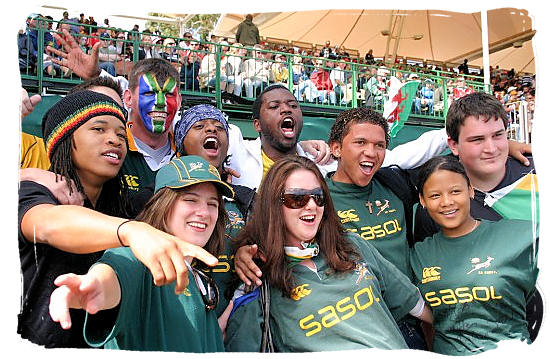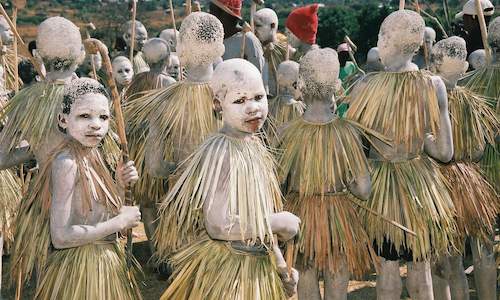3 Easy Facts About South African Culture Today Described
3 Easy Facts About South African Culture Today Described
Blog Article
South African Culture Today Can Be Fun For Everyone
Table of ContentsNot known Details About South African Culture Today What Does South African Culture Today Do?South African Culture Today for DummiesTop Guidelines Of South African Culture TodayWhat Does South African Culture Today Do?The South African Culture Today Diaries
This adheres to with vocal singing and drum whipping. The couple after that meet the seniors and speak regarding the value of their union. A matter of value in Zambian towns is the diing of liked ones. All participants of the village placed cash, effort and time with each other for the interment of the deceased.Songs and dancing is a really essential aspect of the Zambian culture. The various tribal systems have their own dancing kinds; nonetheless, makishi is typical amongst all people.
How South African Culture Today can Save You Time, Stress, and Money.
When it pertains to songs, drums are used the most, with a selection of drumming events. In Zambia, bulk of the people are Christian; Protestant and Roman Catholic. There are tiny teams of Muslims and Hindus, with the rest following neighborhood indigenous tribal ideas.

South African heritage and society is exceptionally diverse, and is composed of numerous various groups of individuals that each have their very own traditions and beliefs. Having such a variety of individuals and societies is what makes South Africa so distinct. In the true sense of the phrase, we are a rainbow country.
Making it the 7th on the checklist of countries with the most Portuguese individuals in it outside of Portugal. Portuguese is not just a society, yet it is likewise a language and a citizenship. Portuguese people originate from the country of Portugal in Europe, nevertheless, due to Portugal (like many other countries in Europe) exploring the world and overcoming other nations throughout the 15th 20th centuries, South Africa has what we call Portuguese South African's living in it.
Things about South African Culture Today
Among the popular functions of the topography is a plateau that covers practically 2 thirds of the center of the country. The plateau complex climbs towards the southeast, where it culminates in the Drakensberg range, component of an escarpment that separates the plateau from the coastal areas. The Drakensburg includes Champagne Castle, the highest possible height in the nation.
The area north of the Witwatersrand, called the bushveld, slopes downward from east to west toward the Limpopo River, which develops the worldwide boundary. The western area of the plateau, the middleveld, likewise comes down in the direction of the west and varies in elevation in between the highveld and bushveld. Between the Drakensburg and the eastern and southern shoreline, the land descends to the sea.
Nearer the shore there is a low-lying plain called the eastern lowveld. Southwest of the plateau the country becomes progressively extra arid, paving the way to the hostile desert of the Great Karroo, approached the east by the reduced, much better watered plateau of the Little Karroo. Dividing the dry southern inside from the sandy coastal of the southerly shore and West Cape is one more variety, the Langeberg.
The Best Guide To South African Culture Today
The nation's racially, ethnically, and politically split history has actually generated national and subnational icons that still work as icons of the nation, and others symbols that are accepted only by specific groups. The monoliths to white inhabitant occupation and political prominence, such as the Afrikaner Voortrekker ("leader") Monolith in Pretoria and the Rhodes Monolith recognizing the British colonial realm contractor and Cape prime priest Cecil Rhodes, remain sectarian icons.
The very first contemporary occupants were the San ("bushman") hunter-gatherers and the Khoi ("Hottentot") peoples, who rounded up livestock (South African culture today). The San might have been existing for countless years and left evidence of their presence in thousands of old cavern paints ("rock art"). Bantu-speaking clans that were the ancestors of the Nguni (today's amaZulu, amaXhosa, amaSwazi, and vaTsonga individuals) and Tswana-Sotho language teams (today's Batswana and Southern and Northern Basotho) moved below eastern Africa as very early as the fifteenth century

Both previous republics of the Orange Free State and Transvaal (South African Republic) were established by Afrikaner settlers who beat and dispossessed the Basotho and Batswana. Lesotho would have been forcibly included into the Orange Free State without the extension of British defense in 1869. The utmost marriage of the country resulted from the South African Battle (18991902) in between the British and both Afrikaner republics, which minimized the country to spoil at the start of the twentieth century.
Afrikaners historically considered themselves the only real South Africans and, while approving complete citizenship to all citizens of European descent, rejected that status to people of shade till the democratic shift of 1994. British South Africans maintain a sense of cultural and social link to Great Britain without compromising their identification next as South Africans.
See This Report about South African Culture Today
The variety and fragmentation within ethnic groupings and the balance of tensions in between those groups throughout the twentieth century avoided interethnic civil dispute. While intergroup tensions over sources, privileges, and political prominence stay, those problems are as likely to pit Zulu against Zulu as Zulu against Xhosa or African against Afrikaner.
From colonial India, British vendors and managers brought the curved steel ornamental roofing systems and slender shoelace job columns that still typify the verandas of view publisher site cottages in the areas and cities throughout the nation. Holy places add a crucial architectural element also in the tiniest towns. In addition to the rising steeples and classic stonework of Afrikaans Dutch Reformed churches, Anglican churches, synagogues, mosques, and Hindu temples supply variety to the spiritual architectural scene.

Butchering and the brewing of conventional grain beer are necessary in securing the engagement and goodwill of the forefathers who are thought about the guardians of great ton of money, success, and wellness. Indian communities keep their native culinary traditions and use them on Islamic and Hindu routine and ritualistic celebrations. Afrikaners and Coloured individuals gather at weekends and special occasions at multifamily barbecues called braais, where area bonds are strengthened.
Since this was the primary economic venture of both black Africans and white colonists, problem between those groups fixated the belongings of grazing land and animals. In 1867, the largest diamond down payments in the world were uncovered at Kimberley in the west central location. The wealth from those areas aided finance the exploitation of the best gold coral reef on the planet, which was uncovered on the Witwatersrand in 1886.
South African Culture Today Can Be Fun For Anyone
This caused misconceptions and deliberate misrepresentation in the negotiations of white settlers and federal government officials with African principals during the early click for more american duration (South African culture today). In the facility of African books, some facets of public and mainly "tribal depend on" land period were protected, and even in white rural areas, types of communal period were still practiced in locations with African communities
After the autonomous transformation of 1994, programs for land restitution, redistribution, and reform were instituted, yet progress has been sluggish. The white minority still controls eighty percent of the land. Following farming land invasions in Zimbabwe, the Department of Land Affairs has actually pledged to speed land redistribution.
Report this page